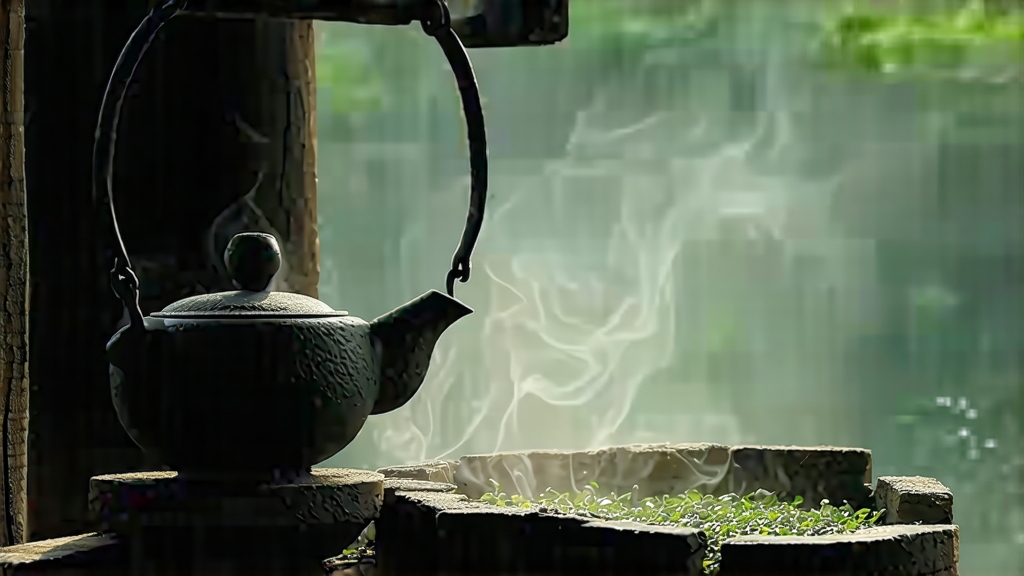
Tucked away in the humid, bamboo-covered mountains of southern China’s Guangxi Zhuang Autonomous Region, Liu Bao cha has been quietly perfecting the art of post-fermentation for more than 1,500 years. Long before the word “pu-erh” became fashionable in boutique cafés from Brooklyn to Berlin, caravans of porters, mules and river junks were already moving this glossy, jet-black tea along the 6,000-kilometre Tea Horse Road, exchanging it for Tibetan horses, Indochinese spices and, later, the silver dollars of overseas Chinese miners in Southeast Asia. Today Liu Bao is experiencing a renaissance among collectors who prize its deep, woody sweetness and its uncanny ability to improve for decades when stored with skill and patience. Yet outside Asia it remains the least understood member of China’s dark-tea family. This article invites the global tea lover to discover why Liu Bao deserves a place beside the grand crus of Burgundy and the vintage ports of the Douro.
-
From Frontier Currency to Modern Collector’s Gem
The earliest written reference appears in the Tang dynasty (618-907) county annals of Cangwu, describing “black cakes from Liu Bao village” bartered for salt. By the Qing era the tea had become so vital to the imperial economy that the Jiaqing Emperor (1796-1820) granted it “gong cha” (tribute tea) status. Jars sealed with pomelo peel and clay were shipped down the Xunjiang River to Wuzhou port, then reloaded onto ocean junks bound for Kuala Lumpur and Singapore where coolies drank it to ward off malaria and damp. In 1886 alone, customs records show 1,100 tonnes exported—an astonishing volume for a hand-made mountain tea. The 20th century brought war, revolution and a collapse of demand; production fell below 50 tonnes in 1978. Only since 2005, when China listed Liu Bao as one of its National Intangible Cultural Heritages, have workshops revived ancient recipes and built temperature-controlled cellars to satisfy a new domestic and international market. -
Terroir: Where Humidity Writes the Score
Liu Bao township lies at 23 °N, 300–800 m above sea level, inside a granite basin that traps monsoon clouds. Annual rainfall exceeds 1,600 mm and relative humidity hovers at 85 %—ideal conditions for the benign molds and yeasts that will later orchestrate fermentation. The native cultivar, Camellia sinensis var. sinensis ‘Guangxi Large Leaf’, carries unusually thick cell walls rich in pectin and soluble sugars, providing ample food for microbial transformation. Old-growth tea gardens intercrop with cinnamon, longan and Chinese bay laurel; their pollen and leaf litter subtly perfume the leaf, giving rise to the famous “betel-nut” note that distinguishes Liu Bao from Yunnan’s shou pu-erh. -
Harvest Calendar: One Leaf, Five Grades
Spring plucking begins just after Qingming festival when two leaves and a bud reach 4–5 cm. Summer rain teas, harvested in June, are fleshier and higher in polyphenols, prized for long aging. Autumn leaf is lighter, more floral, and usually reserved for blending. Farmers grade the maocha into five tiers: Special (tippy), First (one bud-two leaves), Second (three leaves), Third (four leaves plus coarse), and Fourth (“huang pian” yellow flakes). Only the top three grades enter the premium fermentation cycle; the rest become compressed bricks for wholesale markets in Guangdong. -
Crafting Liu Bao: The Six Acts of Transformation
Act I – Solar Withering: Fresh leaf is spread on bamboo racks for 3–4 hours until it loses 15 % moisture and emits a faint banana aroma.
Act II – Kill-Green: A short 3-minute roast at 280 °C in a waist-high wok deactivates enzymes yet preserves microbial spores on the leaf surface.
Act III – Rolling: The hot leaf is rolled for 20 minutes under mechanical pressure to rupture cells and expose sugars.
Act IV – Sun-Drying: The maocha is spread on courtyards for two full days, turning every hour, until moisture drops to 10 %.
Act V – Wet Piling (wo dui): Unique to dark teas, this is where Liu Bao finds its soul. Workers pile 3,000 kg of dried leaf into a wooden trough, spray it with 35 % water by weight, cover it with j